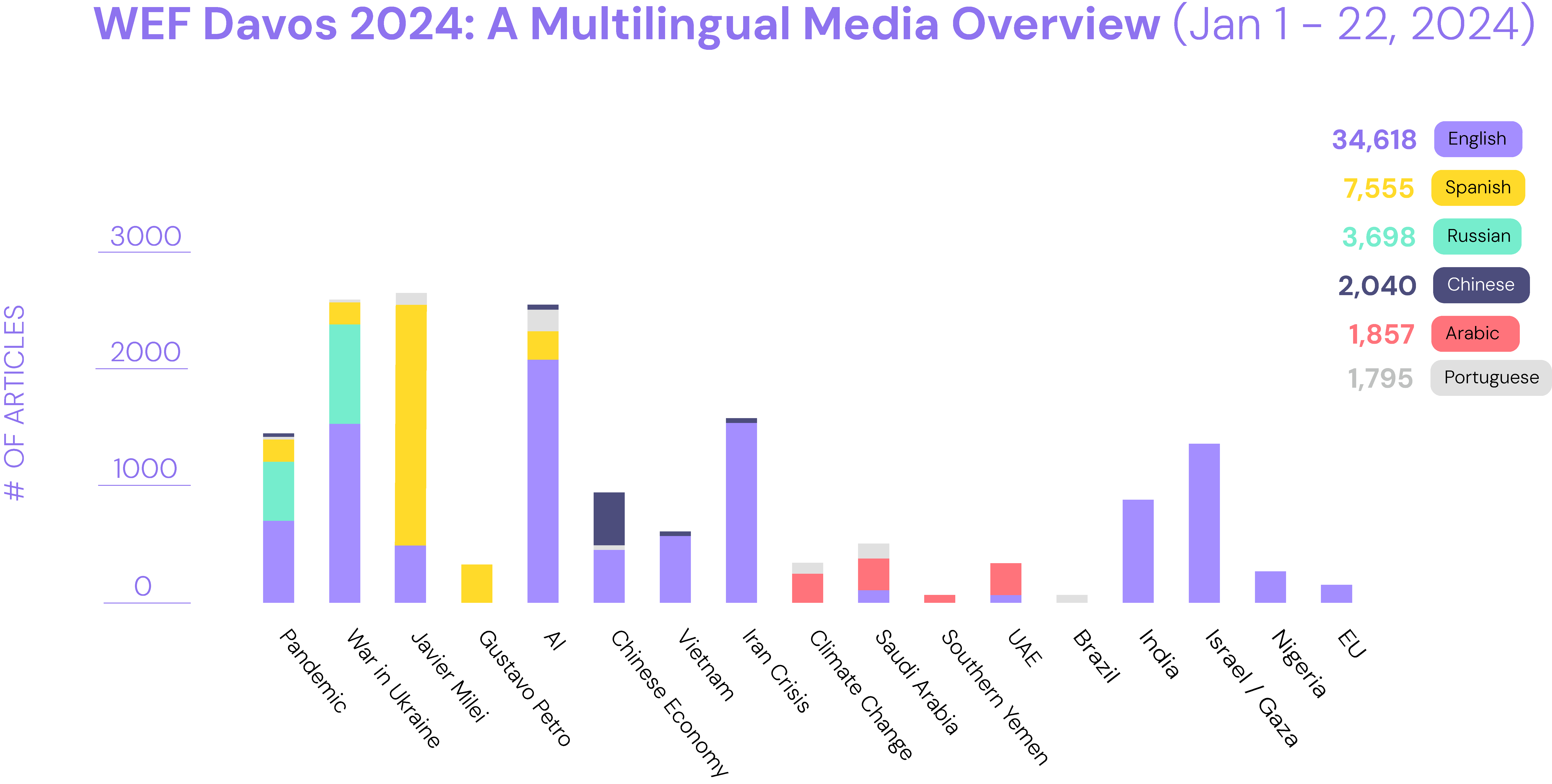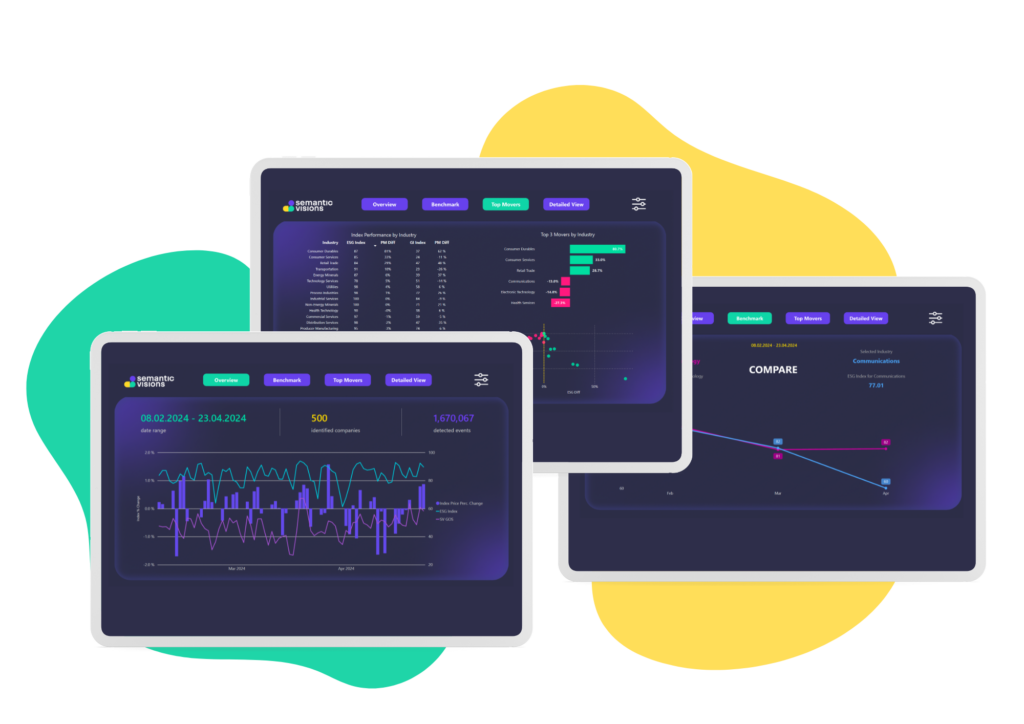4 min read
TOP 5 Media Highlights from Davos 2024

The predominant focus in discussions at DAVOS revolved around the vulnerabilities within the global supply chain, a subject underscored prominently by all involved. In his address, the Chinese Premier highlighted trade barriers, emphasizing their pivotal role. The speech also shed light on various risks associated with disrupted supplies, resonating across diverse sectors.
Following closely was the theme of military conflicts. Notably, ongoing tensions in Ukraine and the Israel-Gaza conflict were central, accompanied by a broader examination of emerging armed conflicts and instability in the Middle East and beyond.
While there’s a marginal decline in investment in U.S. ESG funds, the third key area of discussion encompassed sustainability, climate issues, and the imperative for a green transition. Two noteworthy events at Davos this year delved into gender parity and health gender gaps.
Artificial Intelligence permeated discussions across various contexts. Topics ranged from the inherent risks posed by misinformation and disinformation to democratic processes, to the potential global workforce reduction by 40 percent, as suggested by an IMF study.
Lastly, the fifth reported topic revolved around the anticipation of a future pandemic, as hinted by one of the sessions in Davos titled “Preparing for Disease X.”
A graph with results for Davos 2024 across 6 languages:

Description of the bottom line: Pandemic/ War in Ukraine/ J. Milei/ G. Petro/ AI/ China/ Vietnam/ Iran crisis/ Climate change/ Saudi Arabia/ Southern Yemen/ UAE/ Brazil/ India/ Israel- Gaza/Nigeria /EU
Russian Media
Article Count: 3698
Russian media extensively covered the Davos meeting, with a primary focus on President Zelensky’s participation, generating over 850 articles. The narratives delved into the conflict in Ukraine, exploring its military, geopolitical, and economic dimensions.
Additionally, attention was directed towards the potential threats of the next pandemic (466 articles) and a spectrum of geopolitical issues involving China, the Black Sea, Armenia, Azerbaijan, Turkey, Iran, Saudi Arabia, BRICS, and Vietnam. Notably, the Wall Street Journal’s coverage of technology and disinformation as major global risks received attention.
Spanish Language Media
Article Count: 6137
The Spanish language media, totalling 6137 articles, emphasized the presence of two South American leaders at Davos. Over 2000 articles were dedicated to the newly elected Argentinian president, Javier Milei, who characterized Davos as “contaminated by the socialist agenda.” His address proposing a fiscal surplus within a year was a significant focus. Colombia’s President Gustavo Petro, a former guerrilla member, also garnered attention for his speech on “Addressing the North-South Schism.” Other topics covered included the war in Ukraine, potential AI disruptions, and pandemic X.
Arabic Media
Article Count: 1383
Arabic media (1383 articles) highlighted climate issues and COP28 achievements, the presence and activities of the Saudi delegation focusing on Vision 2030, and the visit and discussions of President Aidaroos Al-Zubaidi of Southern Yemen.
Chinese Language Media
Article Count: 2040
Chinese media predominantly centred on long-term economic improvement and opportunities within the Chinese economy. Premier Li Qiang emphasized macroeconomic policy cooperation, the stability of global industrial and supply chains, and the importance of an open world economy. The reporting also touched on AI and its commercialization, suggesting a perceived lag in European companies compared to the US.
Portuguese Language Media
Article Count: 1795
Portuguese media exhibited a broad range of coverage, addressing various topics. Highlights included the presence of three Brazilian ministers portraying Brazil as a leader in the global energy transition, emphasizing its significant green energy production. The speech of Javier Milei, warnings against socialism, and praises for capitalism were widely covered. Other areas explored included climate issues, AI, political conflicts, and divisions.
English Language Media
Article Count: 34 618
English language media was dominated by discussions on AI, covering its regulation, risks to democratic processes, predictions of labor replacement, business sector expectations, and investments.
The Iran crisis, disruptions to trade routes in the Red Sea, Iran-Pakistan tension, IAEA activities in Iran, and discussions by Iranian diplomats in Davos were also significant. The Israeli war in Gaza, the US call for a two-state solution (rejected by Netanyahu), the rising civilian death toll in Gaza, Israeli-Saudi Arabia ties, and other related aspects were extensively reported. President Zelenski’s presence in Davos received widespread coverage, focusing on finding a “peace formula,” US support for Ukraine, and Zelenski’s reservations about Trump’s assertions. Additional coverage included preparedness for a potential next pandemic, the WHO Director-General’s call for countries to sign the health organization’s pandemic treaty, and insights related to India, such as the 4 percent inflation target, MoU closures, and the Adani Group Head’s perception of consensus on India’s path to a USD 30 trillion GDP by 2050.




